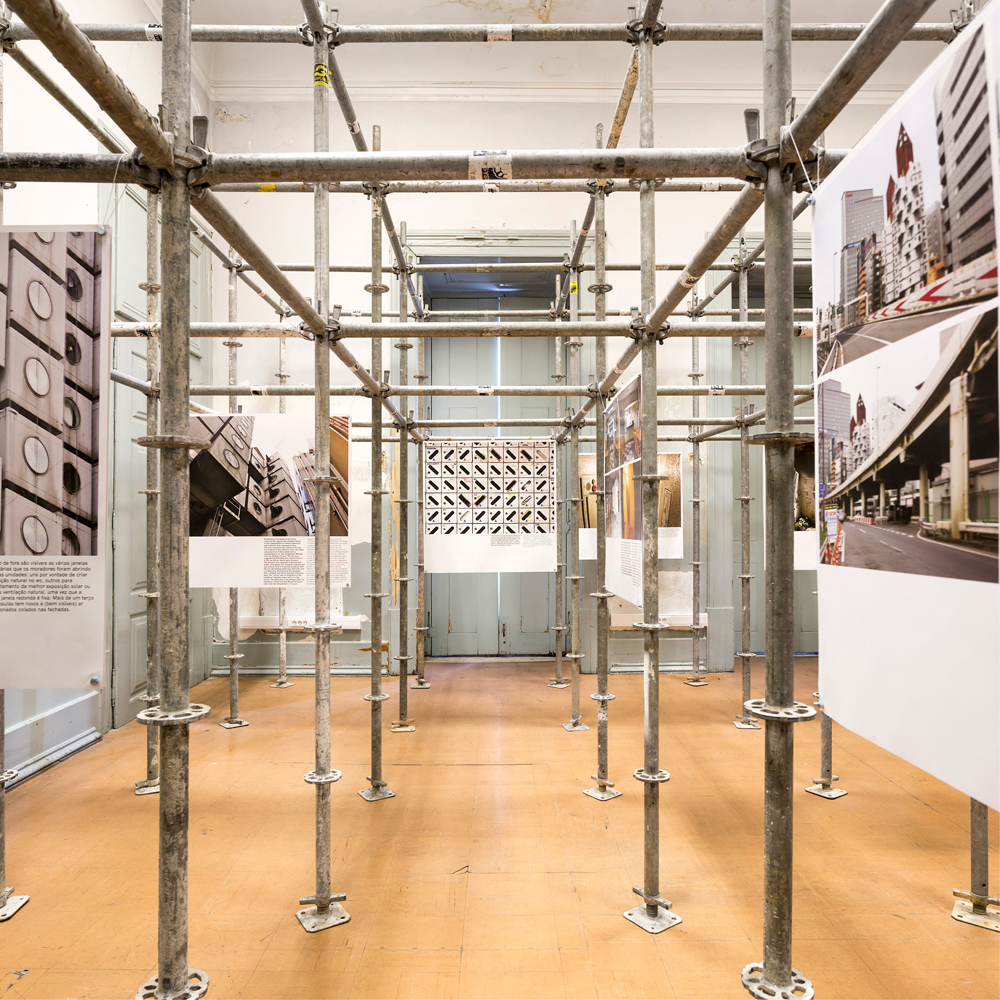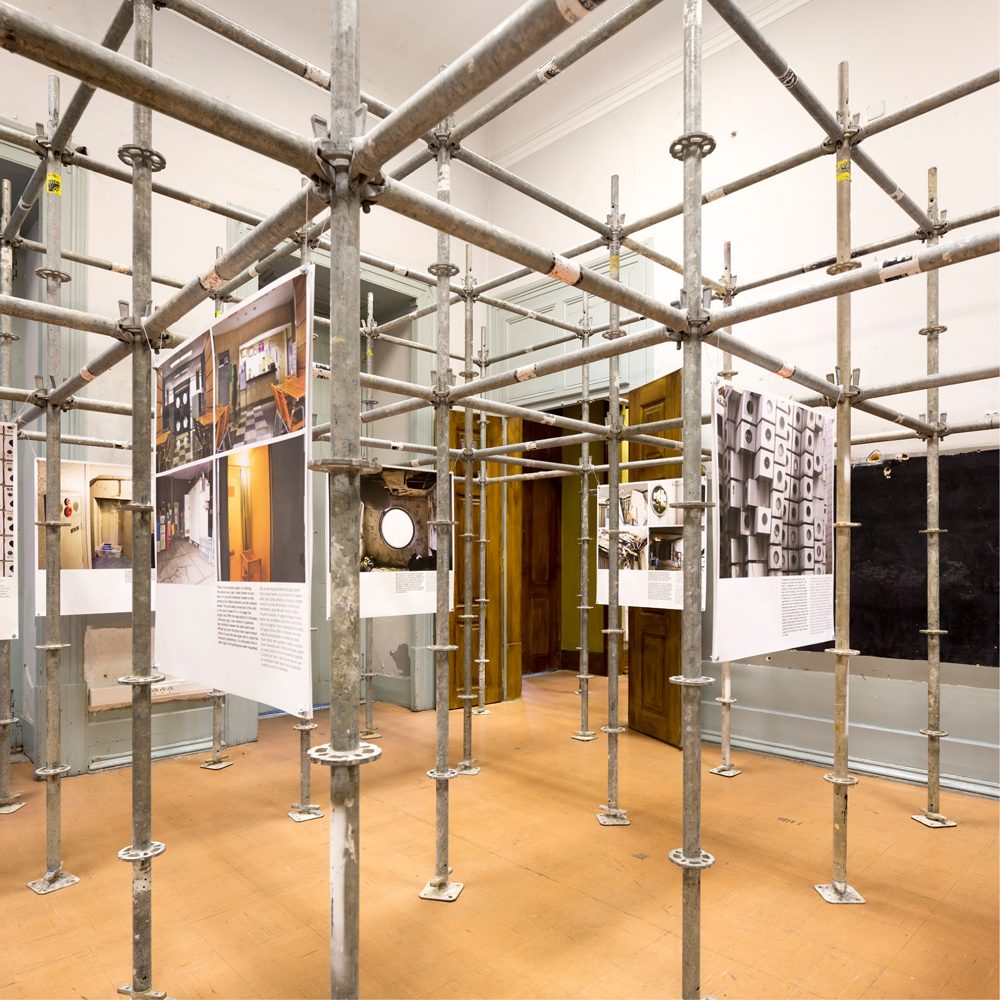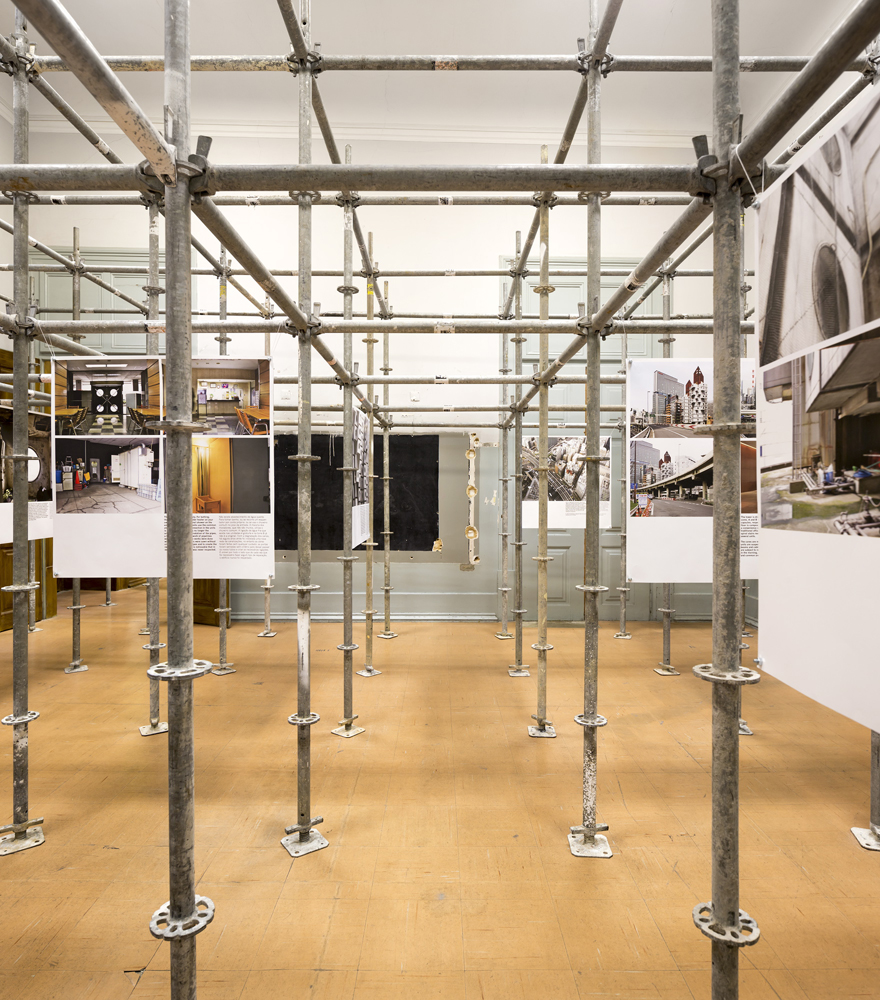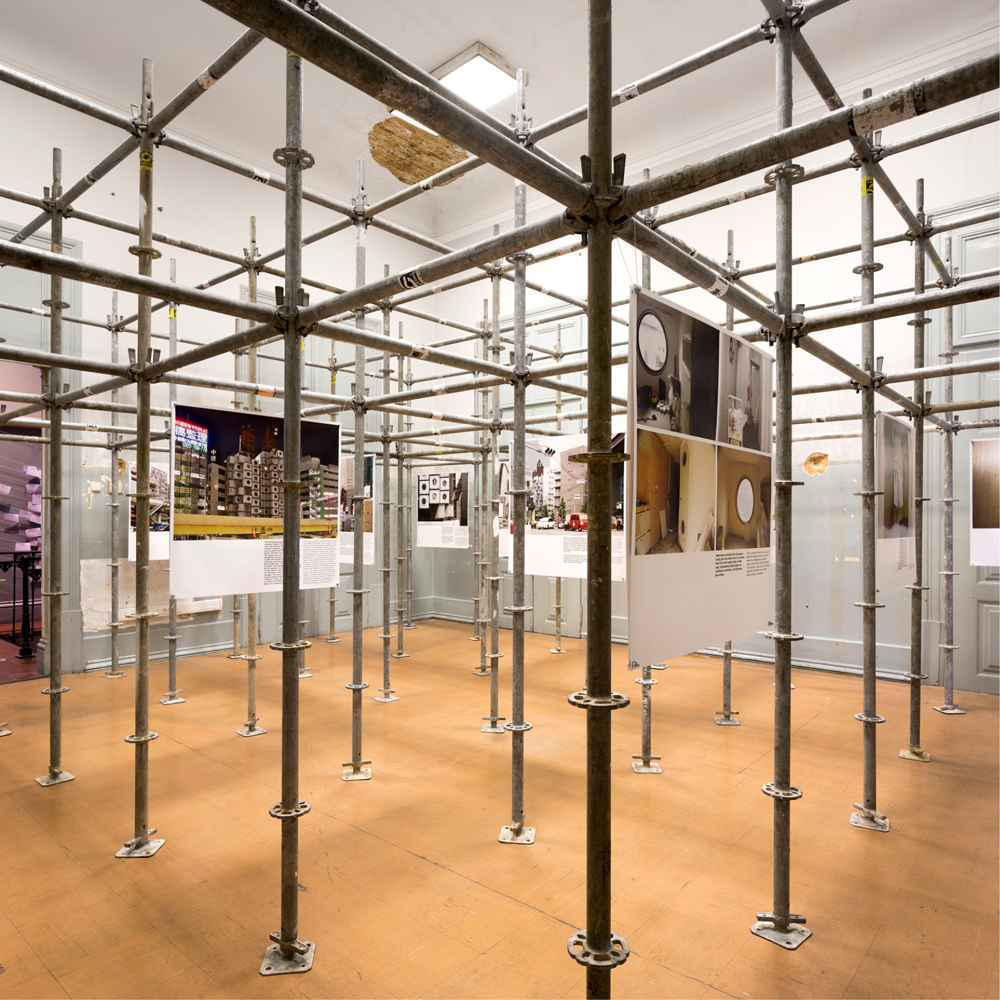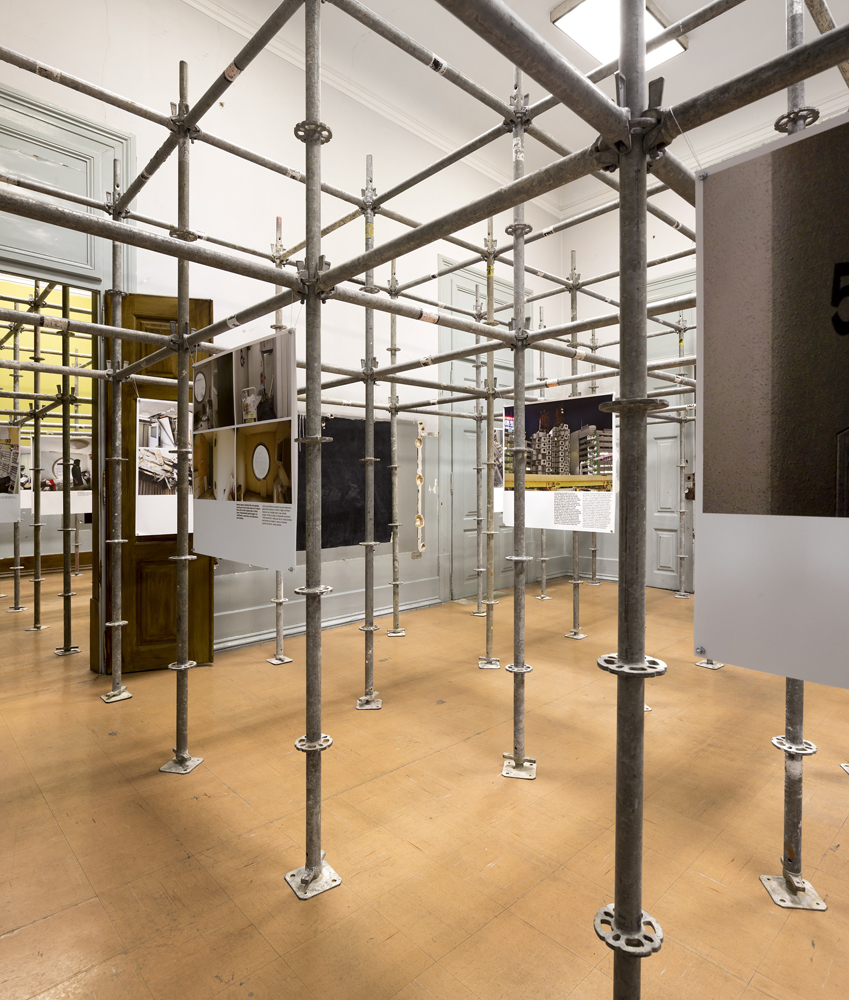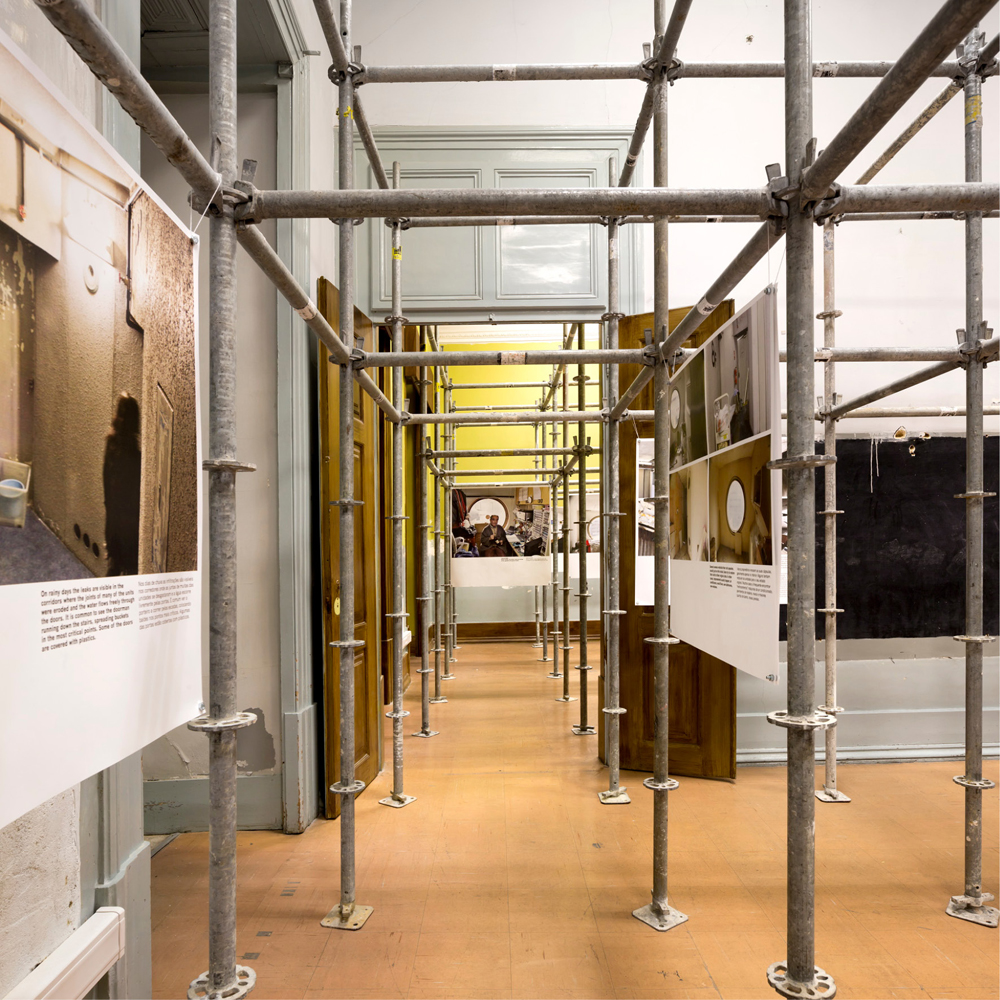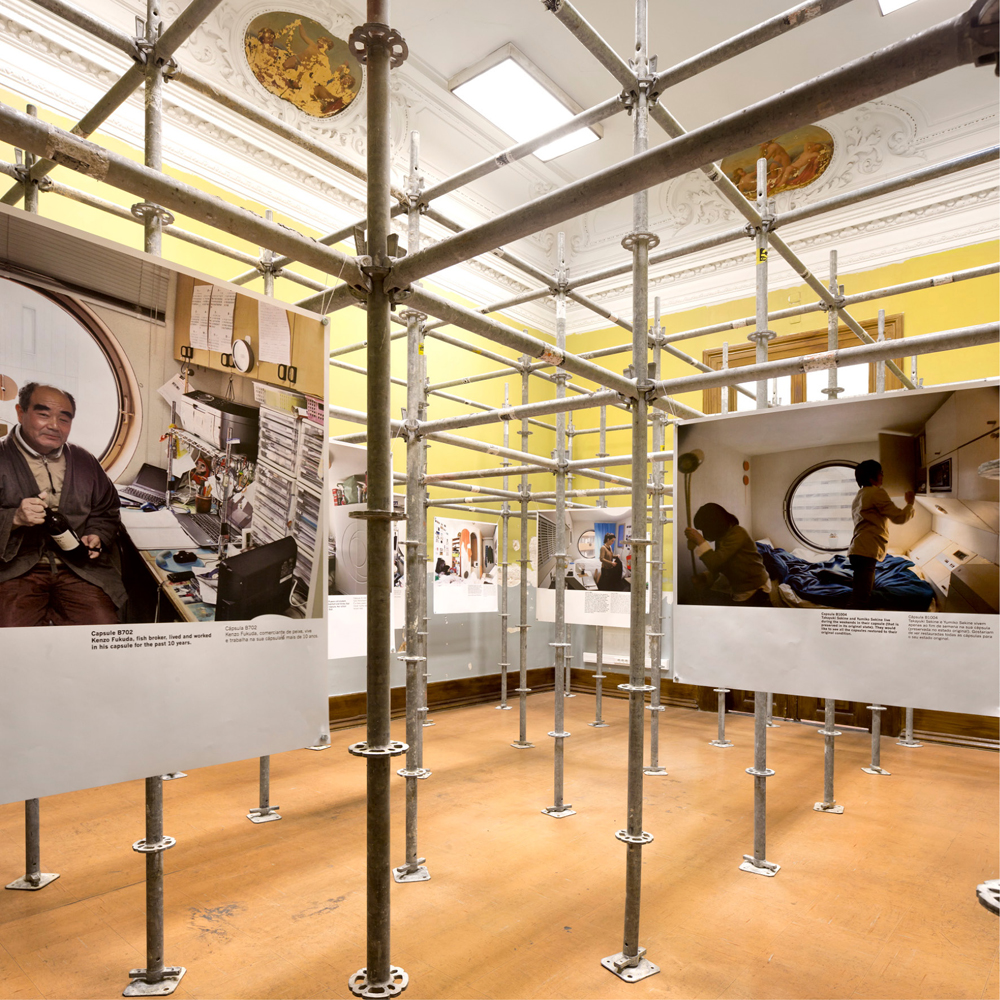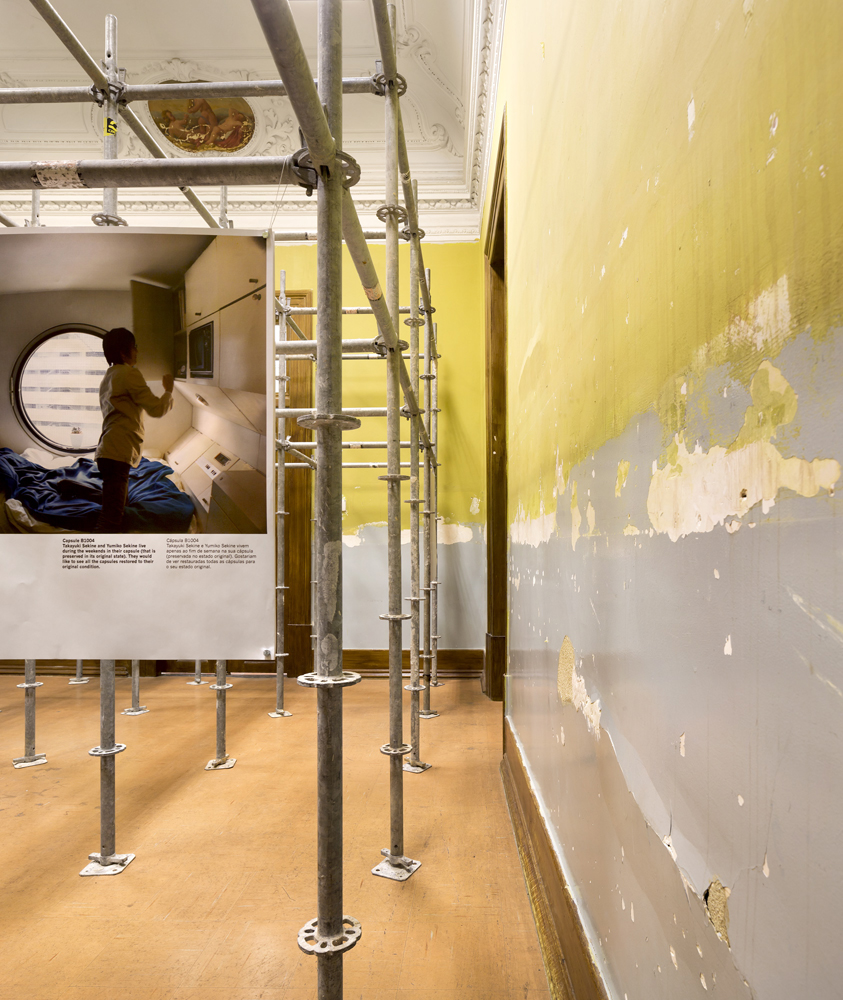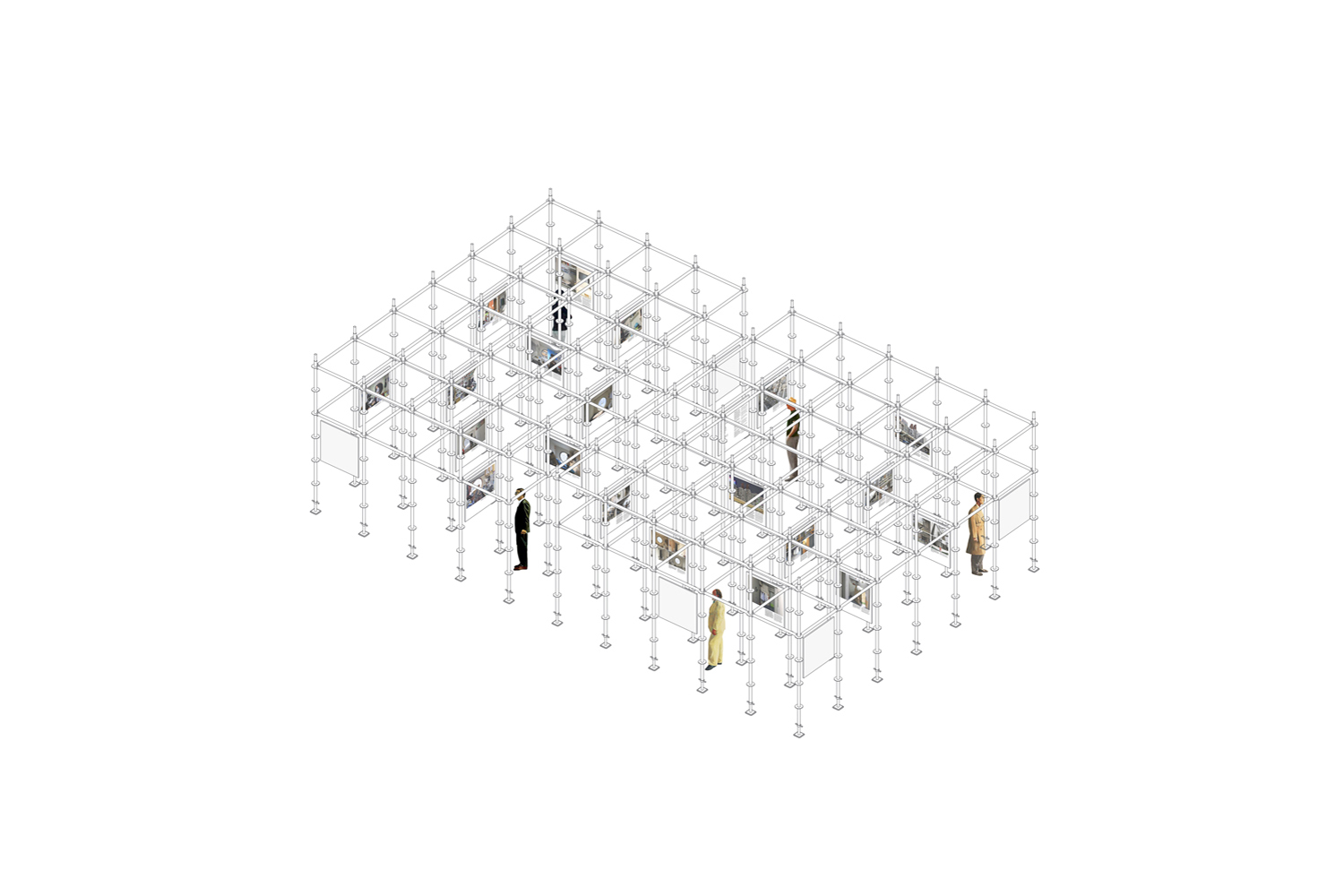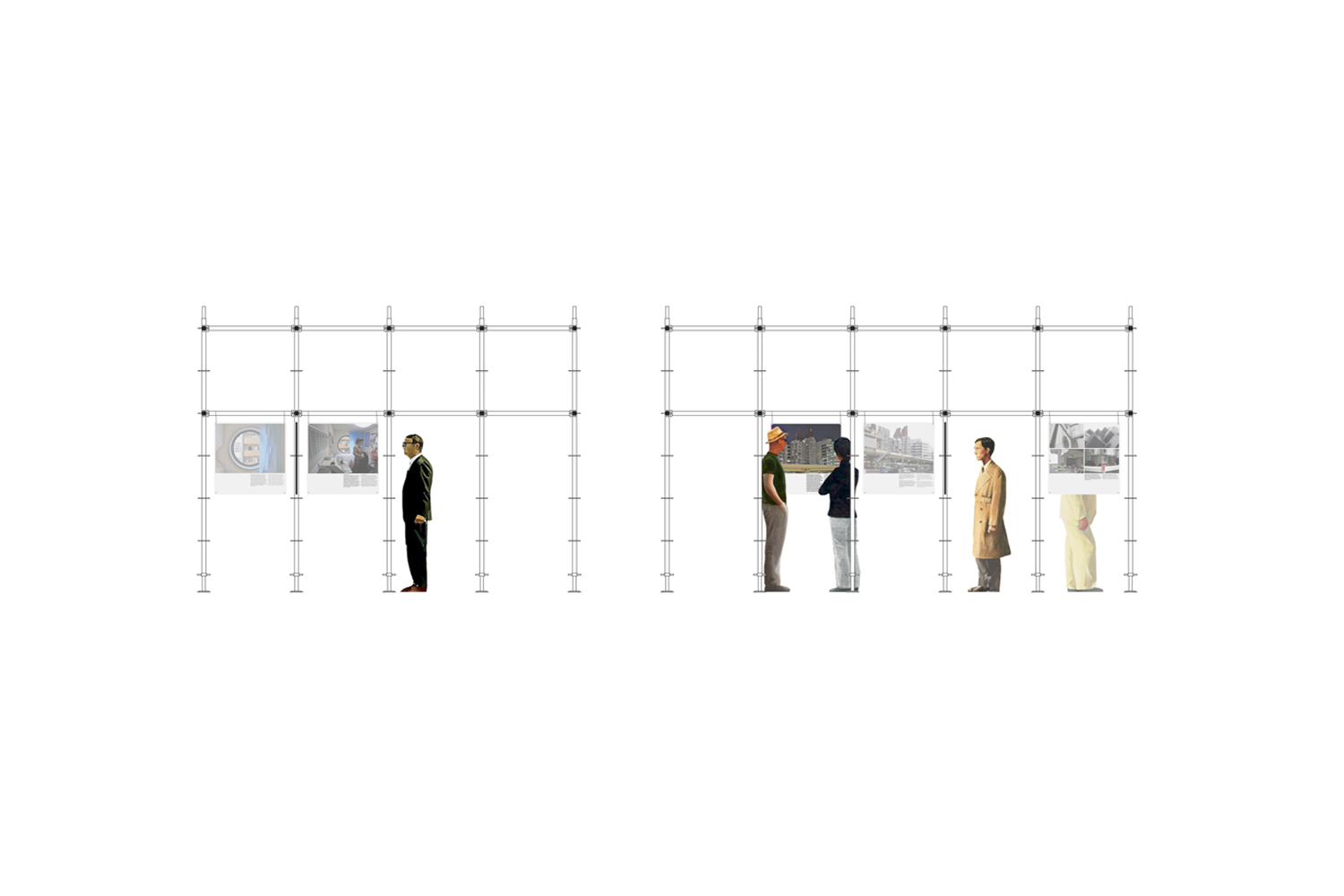12-14,
Anticlimax exhibition
Finding a living space in Tokyo is not easy. Rents are high and residential districts tend to be far from the city centre. So typologically speaking, the Nakagin Capsule Tower still makes sense.
Designed by Kisho Kurokawa and built in 1972, it presented a new way of living and working and also brought something new to the urban regeneration table. However, 40 years down the line, it is now clear that something has gone wrong. People are leaving the building, and some of the capsules are abandoned and have fallen into disrepair. Many owners want to demolish the building; others are putting up resistance. Each replaceable capsule was originally designed to have a lifetime of 20 years, but now twice that much time has passed. The greatest icon of Japanese Metabolism is sick. Today it is little more than a reminder of a future that never came.
Anticlimax was an exhibition on the contemporary daily routine of a hero fallen from grace. Using images of the building’s current state, the exhibition provided an insight into the everyday life of one of the 20th century’s most iconic buildings.
Dedicating a show to this former Metabolist superstar in Portugal was also a provocation.
The layout of the exhibition was, naturally, a form of cul-de-sac. Presenting the Nakagin in a traditional format would have been conceptually wrong. The exhibition took place almost negligently, re ecting the condition of the building and transporting its peculiar notion of scale and repetition to the Sinel de Cordes palace.


